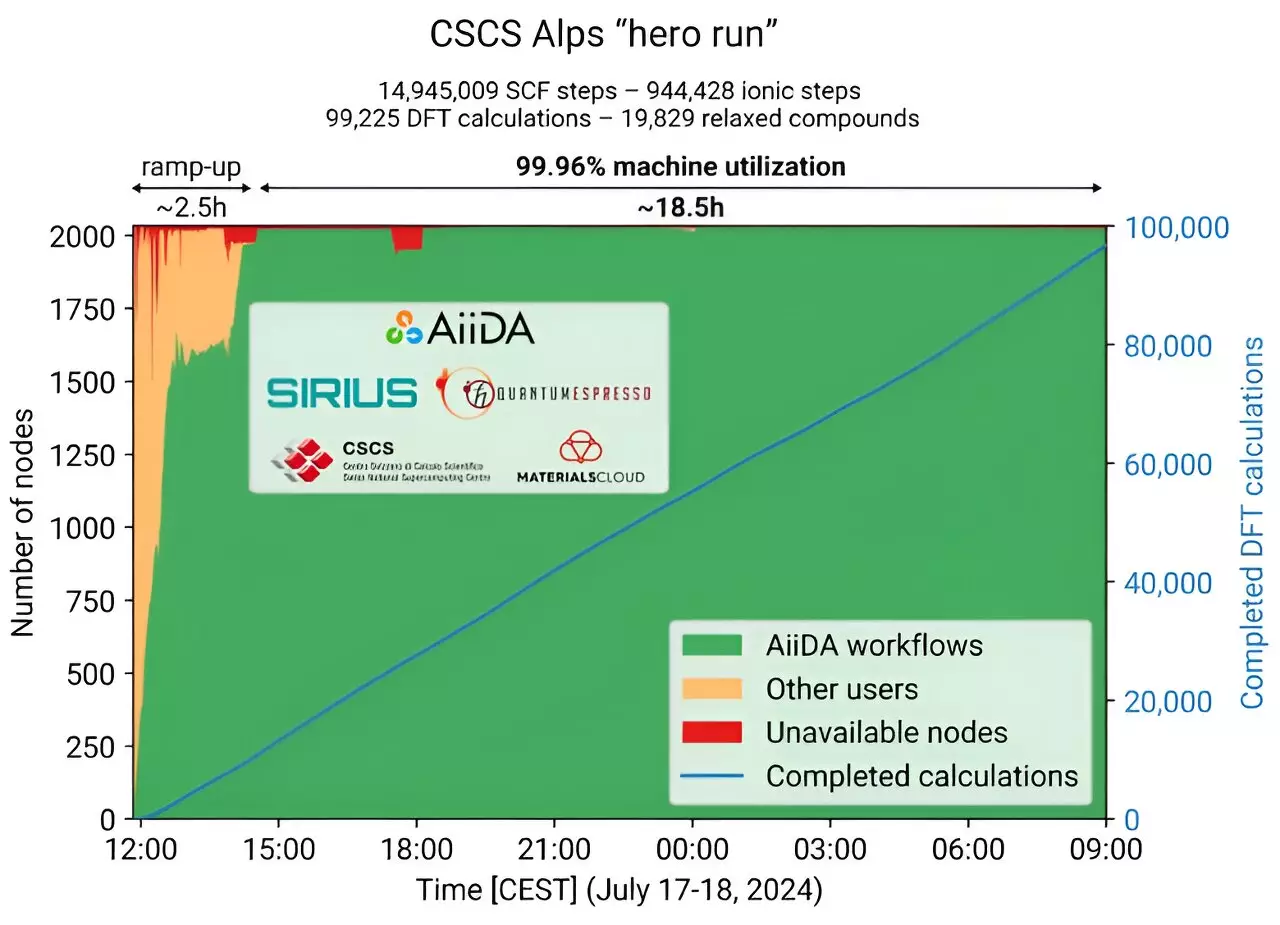In the rapidly advancing world of materials science, the ability to conduct complex simulations has never been more critical. The Swiss National Center of Competence in Research (NCCR MARVEL) has recently demonstrated this necessity through an extraordinary feat of computational prowess using the newly launched Alps supercomputer. This powerful machine, which took its place as one of the world’s leading supercomputers after its formal inauguration on September 14, 2024, represents a pivotal achievement for the Swiss National Supercomputing Center (CSCS). With a large portion of its infrastructure located in the Lugano data center, the Alps supercomputer is poised to transform how scientific research is conducted by facilitating unprecedented calculations in the realm of materials discovery.
One of the most noteworthy aspects of using supercomputers such as Alps is the opportunity to engage in what is known as a “hero run.” This term refers to a designated time period where a supercomputer is dedicated entirely to a single research team. For the NCCR MARVEL’s Giovanni Pizzi’s group at the Paul Scherrer Institute (PSI), this meant immersing themselves in a 20-hour computational marathon. As they prepared for this monumental task, the team—comprising Marnik Bercx, Michail Minotakis, and Timo Reents—was focused on leveraging the machine’s capabilities in a high-throughput calculation context. Such experiments allow for significant advancements in material selection for numerous applications, including energy storage technology.
In conjunction with utilizing the Alps supercomputer, the research team employed AiiDA, an innovative open-source tool designed to facilitate the management of complex simulations in materials science. AiiDA helps automate the lengthy and intricate process of running parallel calculations on numerous material specimens. The principal objective was to effectively harness the full computational potential of the Alps supercomputer while simultaneously managing multiple workflows. Such capabilities are imperative for high-throughput calculations, which can sift through thousands of material structures efficiently—ultimately narrowing down candidates for further investigation.
During the hero run, the team interfaced AiiDA with the Alps hardware, leading them to execute extensive simulations simultaneously. This included calculating electronic properties and ground-state configurations of a variety of different crystal structures sourced from pre-existing databases. The result of such meticulous research could greatly inform experimental efforts, allowing scientists to focus their time and resources on the most promising materials for practical applications.
The marvel of this computational experiment lay not only in its ambitious goals but also in the seamless integration of various components. The team utilized an enhanced version of Quantum ESPRESSO, a widely used software for simulating materials, alongside the highly efficient Sirius library developed by NCCR MARVEL, which is particularly adept at taking advantage of graphics processing units (GPUs). The infrastructure of Alps, comprising thousands of NVIDIA Grace Hopper nodes, facilitated swift processing of the inputs generated by AiiDA. These inputs were submitted to the scheduling software, which efficiently distributed the workload across the numerous cores and GPUs available.
The success of the run is exemplified by the astonishing utilization rate of the supercomputer. The team achieved over 99.96% utilization of the machine during their hero run, reflecting not only the powerful capabilities of the Alps supercomputer but also the effectiveness of AiiDA in managing high-throughput tasks. Such performance metrics indicate a milestone accomplishment for both the researchers involved and the infrastructural advancements made at CSCS.
As the scientific community awaits the publication of their findings, the implications of this project are nothing short of significant. With nearly 100,000 computations completed in just approximately 16 hours, the work not only underscores the potential of supercomputing but also contributes to valuable databases, such as the Materials Cloud, that will benefit researchers across various fields. Furthermore, results from this initiative will be made available as FAIR (Findable, Accessible, Interoperable, and Reusable) data, further fostering collaboration and knowledge sharing.
Ultimately, the Alps supercomputer and AiiDA are not mere tools; they represent a paradigm shift in materials science research. The successful partnership between advanced technological infrastructure and computational methodologies stands to revolutionize the way new materials are discovered, engineered, and applied, paving the way for innovations that could address global challenges in energy, electronics, and beyond. The journey ahead for the NCCR MARVEL and its collaborators looks incredibly promising, heralding a new era in computational materials science.


Leave a Reply